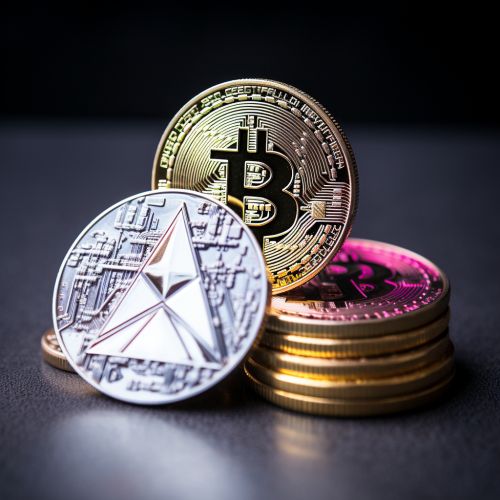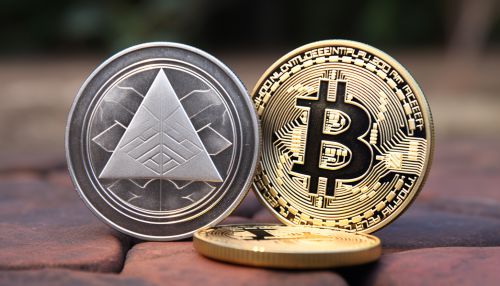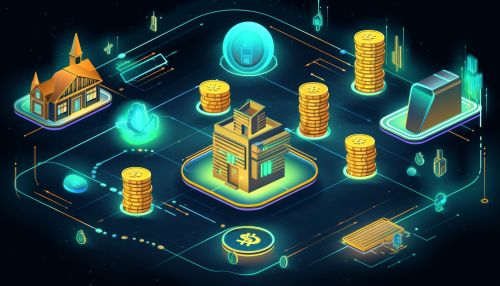Decentralized Finance
Introduction
Decentralized Finance, often referred to as DeFi, is a disruptive financial system that operates independently of traditional, centralized financial intermediaries such as banks, insurance companies, and brokerages. It leverages blockchain technology, particularly Ethereum, to create protocols that replicate existing financial services in a more open, interoperable, and transparent manner.


Overview
Decentralized Finance represents a broad category of financial applications that are being developed on top of blockchain networks. The goal is to create a financial system that is open to everyone and minimizes the need to trust and rely on central authorities. Technologies like blockchain and smart contracts are used to create automated, open-source, and transparent financial services. This includes services like lending, borrowing, trading, risk management, and insurance.
History
The concept of Decentralized Finance emerged from the broader cryptocurrency movement. It was largely inspired by Bitcoin, which demonstrated the potential of blockchain technology to create decentralized digital cash systems. The invention of Ethereum, with its smart contract functionality, opened up a new realm of possibilities, paving the way for the development of complex DeFi applications.


Key Principles of Decentralized Finance
Decentralized Finance operates on several key principles:
Openness
DeFi applications are open and accessible to anyone with an internet connection. Unlike traditional finance, there are no gatekeepers or intermediaries who can deny services to individuals based on their location, wealth, or social status.
Transparency
All transactions in the DeFi space are transparent and can be audited by anyone. This level of transparency is unprecedented in the traditional financial world.
Permissionless
DeFi applications are permissionless, meaning that anyone can create, use, or build on them without requiring approval from any authority.
Interoperability
DeFi protocols are built to be interoperable, allowing them to seamlessly integrate with each other. This composability, often referred to as "money legos", allows for the creation of complex financial products.


Core Components of Decentralized Finance
Decentralized Finance is comprised of several core components:
Stablecoins
Stablecoins are cryptocurrencies designed to minimize volatility by being pegged to a reserve of assets. They play a crucial role in the DeFi ecosystem by providing a stable medium of exchange.
Decentralized Exchanges
Decentralized exchanges (DEXs) are platforms that allow users to trade cryptocurrencies directly with each other, without the need for an intermediary.
Lending Platforms
DeFi lending platforms allow users to lend and borrow cryptocurrencies directly from each other. Interest rates are typically set algorithmically based on supply and demand.
Derivatives
DeFi derivatives platforms allow users to trade financial contracts that derive their value from underlying assets.
Prediction Markets
Prediction markets are platforms where users can bet on the outcome of future events.


Advantages and Disadvantages of Decentralized Finance
Like any financial system, Decentralized Finance has its advantages and disadvantages.
Advantages
Decentralized Finance offers several advantages over traditional finance:
- Accessibility: DeFi is open to anyone with an internet connection, providing financial services to those who are unbanked or underbanked.
- Transparency: All transactions are transparent and can be audited by anyone.
- Interoperability: DeFi applications can be seamlessly integrated with each other, creating a highly flexible and modular financial system.
- Innovation: The open and permissionless nature of DeFi encourages innovation and competition.
Disadvantages
However, Decentralized Finance also has several disadvantages:
- Complexity: DeFi can be complex and difficult to understand, especially for those new to the space.
- Risk: There are various risks associated with DeFi, including smart contract bugs, hacks, and market volatility.
- Regulatory uncertainty: The regulatory landscape for DeFi is still uncertain and evolving.


Future of Decentralized Finance
The future of Decentralized Finance is largely speculative and uncertain. However, many believe that DeFi has the potential to revolutionize the financial industry by creating a more open, transparent, and accessible financial system. As the technology matures and regulatory issues are addressed, it is likely that we will see more widespread adoption of DeFi.


